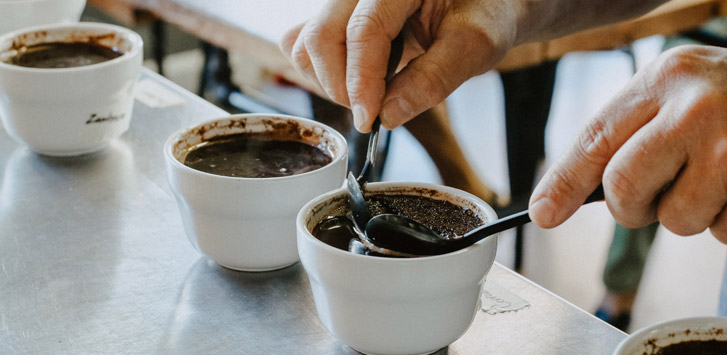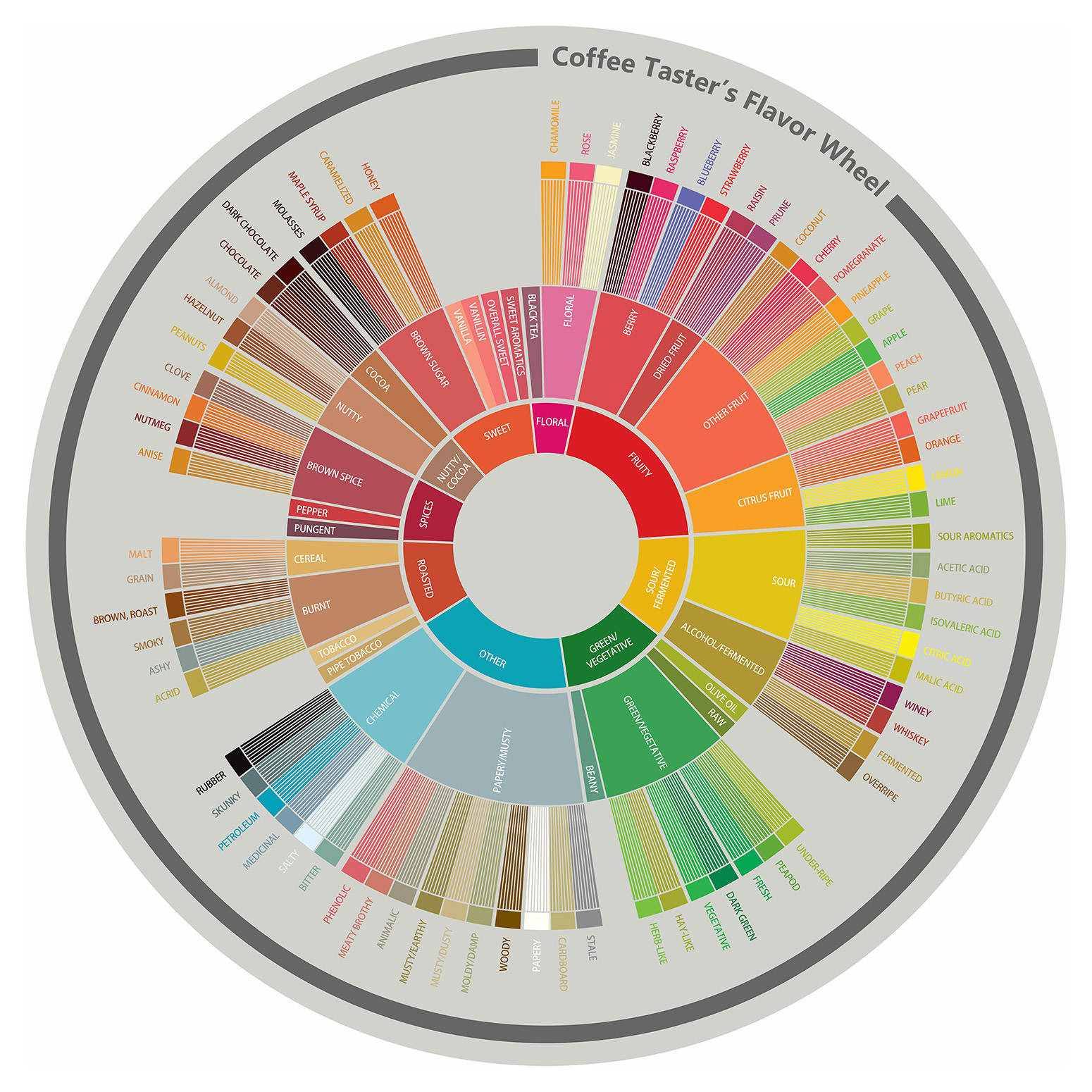We all love a good cup of coffee but how far does your appreciation go? Have you ever tried naming all the different flavors swirling in your cup?
Thanks to the coffee flavor wheel anyone can learn the flavor combinations that make their favorite coffee just that good. If you’ve never heard of it or you’ve heard of it but never tried to use it, consider this a friendly nudge to take that next step in your coffee journey. But before you do, let’s dive into how the coffee flavor wheel came to be, what it is, and how to use it.

The first coffee flavor wheel was published in 1995, but by 2009, most coffee sommeliers considered it outdated and unhelpful. The Specialty Coffee Association of America’s (SCAA) first symposium laid the groundwork for the coffee industry’s next project. Made up of one hundred sensory scientists and two coffee organizations (the SCAA and World Coffee Research), the three year project launched.
After years of hard work and incredible research, the SCAA debuted the new coffee flavor wheel in 2016. To this day, the coffee flavor wheel not only is the most iconic resource within the coffee industry but also the largest research project conducted on coffee. And it was a game changer in the world of coffee.
What Is the Coffee Flavor Wheel?

The coffee flavor wheel is exactly what it sounds like, a wheel made up of three different layers, defining different flavors you can find in coffee. The center of the wheel has flavors any of us would recognize, like savory, spice, nuts, chocolate, and fruit, but from there, the flavors become more niche. For example, the next layer narrows different fruits down to citrus, tropical fruit, stone fruit, berry, or dried fruit. And in the final layer, citrus becomes lime, lemon, orange, and grapefruit.
The WCR sensory lexicon expands on the flavor wheel by describing the sensory experience (taste, smell, or mouthfeel), providing a specific definition, ranking the intensity score from 1 to 15, and naming references to compare the attribute against, universally unifying how coffees are cupped and described. So, what does that look like all together? Here’s an example of an attribute from the coffee wheel.
Attribute Name: Pomegranate
Attribute Description: A sour, sweet, fruity aromatic that may be somewhat dark, musty and earthy, reminiscent of dark fruits and root vegetables, such as beets and carrots. May also have an astringent mouthfeel.
Aroma Intensity: 5.5
Flavor Intensity: 7.5
Reference: R.W. Knudsen Organic Just Pomegranate Juice
The flavor wheel also provides characteristics and body descriptors to further define the specific attributes. Body descriptors range from light to heavy, starting with a watery, tea-like texture and ending with a full texture reminiscent of whole milk. Because of how the flavors, acidity, and body interact in each coffee, you can also describe your cup of coffee as crisp, bright, muted, structured, delicate, dry, syrupy, and dirty. Once you familiarize yourself with the coffee lingo, a whole new world opens up, letting you experience your coffee more fully than you ever have.
How Do You Use the Coffee Flavor Wheel?
Now we get to the most important question: How do you use the coffee flavor wheel? To begin, you’ll want to start in the center and work outward. The most general descriptors are in the center, as you can see above, so this gives you a good baseline to work from and guide your discoveries.
If you feel stuck at any point, take a step back and look at the wheel as a whole. Maybe you can identify that you’re tasting a fruit, so you move further in the wheel, but you aren’t sure which fruit it is. Narrow your choices by color next. If you decide your coffee has citrus notes, is it reminiscent of a yellow citrus fruit or a pink one or green? Each color was carefully chosen to help guide you through your decision making process.
Something else to be aware of are the gaps between specific attributes. These gaps indicate how closely those attributes are to one another. While chamomile and honey may sound similar, they are two distinct flavors, seen in the gap between them.
Coffee cupping isn’t easy, especially if you’re a beginner. People spend years perfecting their craft and learning each nuance to differentiate between flavors. A good tip for coffee cupping beginners is to compare flavors to one another to decide which one you’re tasting. Are there notes of berries or citrus? Vanilla or brown sugar? Nutty or cocoa? While you may not know exactly what each attribute tastes like, you can at least narrow it down by eliminating what the coffee doesn’t taste like.
How Does the Coffee Flavor Wheel Relate to Home Roasters?
While it may seem overwhelming at first glance, the coffee flavor wheel isn’t just for professional tasters or coffee connoisseurs. It was created to help every coffee lover decode the flavor profile of their favorite coffees. Once you learn the lingo, the wheel is an invaluable tool if you’d like to further your coffee journey.
Conclusion
The coffee flavor wheel revolutionized the coffee world by standardizing the lingo, defining each different flavor, and providing real-world references to compare them to. Whether you’re an expert or a beginner, the flavor wheel can help you hone your coffee skills and further your understanding and enjoyment of coffee.